How to Determine Indeterminate Form and Vague Limits
Understanding the elusive concept of indeterminate forms and the nebulous nature of vague limits in calculus is akin to unlocking a secret chamber within the vast palace of mathematics. It requires a careful, stepwise approach that not only simplifies these abstractions but also reveals the intricate beauty underlying them. Here is a guide that will navigate you through the shadowy corridors of indeterminate forms and the misty thresholds of vague limits.
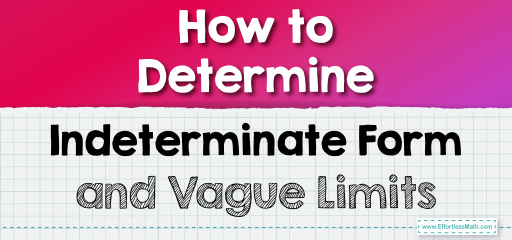
Step-by-step Guide to Determine Indeterminate Form and Vague Limits
Here is a step-by-step guide to determining indeterminate form and vague limits:
Step 1: Comprehending the Zenith of Ambiguity – Indeterminate Forms
The Paradoxical Introduction
- Begin with the recognition that indeterminate forms are the mathematical equivalent of paradoxes. They are expressions that do not lead to a unique solution or a definitive limit.
- Envision these forms as the cryptic hieroglyphs of calculus, which at first glance, provide no clear message or meaning.
Catalog of Common Indeterminate Forms
- \(\frac{0}{0}\): The enigmatic division of nothingness by itself.
- \(\frac{∞}{∞}\): The perplexing division of boundlessness by its own expanse.
- \(0 × ∞\): The baffling multiplication of nothing with infinity.
- \(∞ – ∞\): The contradictory subtraction of infinity from itself.
- \(0^0\): The riddle of raising nothingness to the power of itself.
- \(1^∞\): The conundrum of one, omnipotent in its unity, raised to infinite power.
- \(∞^0\): The puzzle of boundlessness raised to the null power.
Philosophical Interlude
Reflect on the nature of these forms. They are not simply numerical entities; they are the very boundaries of mathematical logic, the precipices where our numerical intuitions falter.
Step 2: The Odyssey Through Limits – The Heart of Calculus
Preparing for the Journey
- Understand that a limit, in its essence, is the value that a function approaches as the input approaches some value.
- Limits can be as clear as daylight, like the horizon at dawn. But at times, they are as obscure as the horizon at twilight, shrouded in vagueness.
The Ascent to Vague Limits
- Engage with vague limits. They are not indeterminate in form but are elusive, their true nature hidden by an initial obfuscation.
- To find the path through this haze, you must learn to use the tools of calculus—like L’Hôpital’s Rule, which is the mathematical equivalent of a lighthouse piercing through the fog.
Step 3: Deciphering Indeterminate Forms – The Alchemist’s Transmutation
L’Hôpital’s Rule – The Golden Key
- L’Hôpital’s Rule states that if the limit leads to an indeterminate form of \(\frac{0}{0}\) or \(\frac{∞}{∞}\), one can take the derivative of the numerator and the derivative of the denominator and then re-evaluate the limit.
- This rule is the philosopher’s stone that transmutes the base metals of indeterminate forms into the gold of clarity.
Application with Precision
- \(\frac{0}{0}\): Apply L’Hôpital’s Rule, and continue to differentiate until the indeterminacy is resolved.
- \(\frac{∞}{∞}\): Employ the rule, and observe the function’s behavior as it strips away layers of complexity.
Beyond L’Hôpital
- For forms that L’Hôpital’s cannot decipher, turn to algebraic manipulation, like factorization or conjugation, which act as the subtle knives that carve out the essence of the limit.
- Use series expansion for forms like \(0^0\), \(1^∞\), and \(∞^0\), which unfold the function into an infinite series, each term revealing more about the limit’s true nature.
There are some to solve indeterminate forms and vague Limits. Let’s explore each method with the precision and clarity they demand:
Factoring:
The Strategic Dissection
- Identifying Hidden Structures: Factoring involves rewriting a function as a product of its factors. It’s akin to recognizing that a seemingly solid block of stone is actually a composite of smaller, interlocking pieces.
- Illuminating the Path: By factoring, we can often cancel out terms that lead to indeterminate forms. Consider the limit as \(x\) approaches \(0\) of \(\frac{x^2−1}{x−1}\). Factoring the numerator as \((x−1)(x+1)\) reveals a cancellable term, thereby clarifying the limit.
- The Consequence of Removal: Once the common factors are canceled, what remains is a simpler function whose limit can be evaluated directly, effectively bringing light to what was once veiled in darkness.
Rationalizing:
The Alchemical Conversion
- Crafting Complements: Rationalizing typically involves multiplying the numerator and denominator by a “conjugate.” The conjugate is the twin of a given expression, with the sign between its terms reversed. For example, the conjugate of \(a+\sqrt{b}\) is \(a−\sqrt{b}\).
- Revealing Hidden Simplicity: This process is particularly useful when dealing with square roots or other radical expressions. Through rationalization, you transform a denominator that includes a radical into one that is a rational number. For example, rationalizing \(\frac{1}{\sqrt{x}+1}\) by multiplying by \(\frac{\sqrt{x}-1}{\sqrt{x}-1}\) clears the radical.
- The Purification Process: Rationalizing can convert a vague limit into one that is straightforward to compute, by purifying the function of its irrational components and allowing for a direct substitution or simplification.
Change of Functions:
The Metamorphosis
- Strategic Substitutions: Changing the function, or substituting part of the function with another expression that is equivalent near the point of interest, can sometimes resolve an indeterminate form. This is like changing a disguise to reveal the true identity beneath.
- Transformative Insight: For instance, changing trigonometric functions into their exponential form using Euler’s formula can sometimes turn an indeterminate form into one that is determinate. A complex expression involving sine and cosine, when viewed through the lens of exponentials, can become much more tractable.
- Navigating Through Complexity: Another example is the substitution of \(x=\frac{1}{t}\) in a limit as \(x\) approaches infinity. This transforms the limit into one as \(t\) approaches zero, often simplifying the expression and thus lifting the veil on the limit’s true value.
Step 4: Mastering the Art of Subtlety – Series and Beyond
Series Expansion – The Unfurling of Functions
- Take the function apart, piece by piece, like an intricate puzzle, and lay out its infinite series.
- Each term is a clue, and as you sum them, a picture emerges, dispelling the vagueness, and sharpening the blurred edges of limits.
The Confrontation with Infinity
- Contemplate the concept of infinity. It is not a number but a direction, a journey without end.
- In dealing with indeterminate forms involving infinity, you are charting a course toward the horizon of mathematics, where the finite and infinite dance in liminal spaces.
Step 5: The Enigma Resolved – Conclusion and Continuation
The Philosophical Resolution
- Realize that indeterminate forms and vague limits are not obstacles but invitations to deeper understanding.
- They are not mere puzzles to be solved but portals to higher mathematical thought.
The Mathematical Journey Continues
- Every limit solved, every indeterminate form clarified, is a step on the never-ending journey of mathematical enlightenment.
- Carry this knowledge like a torch into the caverns of calculus, and let it illuminate the darkness of uncertainty.
This guide is but a map of the vast and serpentine world of limits and indeterminate forms. As with any map, the territory it describes is infinitely more complex and beautiful. It beckons with a siren call for the mathematically brave to explore its depths.
Related to This Article
More math articles
- 8th Grade MAAP Math Worksheets: FREE & Printable
- Is your child ready for algebra 1?
- Bridging the Gap: From Basic Math to Algebra with “Pre-Algebra for Beginners”
- Top 10 PERT Math Prep Books (Our 2023 Favorite Picks)
- Is the PERT Test Hard?
- Unraveling the Art of Graphing: A Deep Dive into Absolute Value Functions
- Graph Points on a Coordinate Plane
- How to Make Math Lessons More Engaging?
- How to Model and Solve Equations Using Algebra Tiles
- Areas Formed by Function Contours















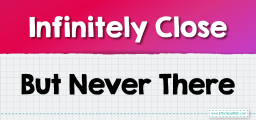
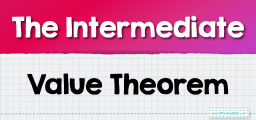

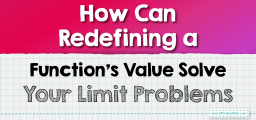
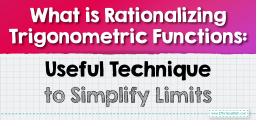
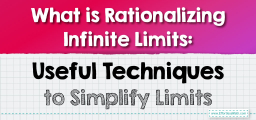
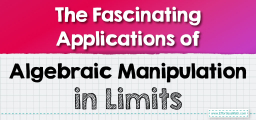




What people say about "How to Determine Indeterminate Form and Vague Limits - Effortless Math: We Help Students Learn to LOVE Mathematics"?
No one replied yet.